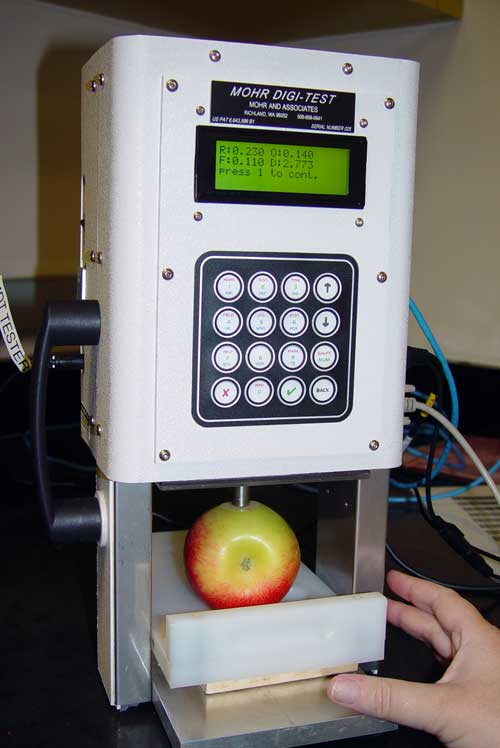Author:
Dr. Amy Iezzoni, Michigan State University
Introduction
The Ma locus is selected as one of RosBREED’s “Jewels in the Genome,” because the Ma locus simultaneously provides predictions for three high priority traits: acidity, crispness, and juiciness. Identification of Ma locus alleles allows breeders to make desirable parental combinations and select seedlings with superior performance prior to field planting.
Apple Texture and Taste
Crisp, juicy apples with pleasing acidity are highly desirable for the fresh market. However, obtaining the optimum combination of these desirable textural and taste attributes has been challenging. Soft, mealy, poor tasting apples frequently occur in breeding populations. A region on linkage group (LG) 16 contains gene(s) that influence apple crispness and juiciness (King et al. 2001).
Ma Locus
In apple (and many other fruits), malic acid is a major contributor to fruit acidity. Interestingly, the locus that controls malic acid level in apple, Ma, is also located near the top of apple LG 16 (Maliepaard et al. 1998). Alleles for the Ma locus in apple are associated with a wide range of eating quality. For example, some types appear to be associated with desirable tart crisp juicy apples, other types with just crisp or tart apples, and some with poor quality for all these traits. The Ma locus is currently under detailed investigation in RosBREED (Fig. 1), and is already revealing much wider diversity in U.S. breeding germplasm than originally reported in European apple populations

Figure 1. Evaluating crispness with a Mohr Digi-Test. Photo credit: Kate Evans, Washington State University.
References Cited
- Iezzoni, A. 2010. Jewels in the Genome. RosBREED Newsletter 1(1): 9. (http://rosbreed.s3.amazonaws.com/wp-content/uploads/2010/10/2010-02_RosBREED.Newsletter.pdf) (verified 12 Dec 2012).
- King G.J., Lynn J.R., Dover C.J., Evans K.M., and G.B. Seymour. 2001. Resolution of quantitative trait loci for mechanical measures accounting for genetic variation in fruit texture of apple (Malus pumila Mill.). Theoretical and Applied Genetics 101: 1227-1235.
- Maliepaard C., Alston F.H., van Arkel G., Brown L.M., Chevreau E., Dunemann F., Evans K.M., Gardiner S., Guilford P., van Heusden AW, Janse J, Laurens F, Lynn JR, Manganaris AG, den Nijs APM, Periam N, Rikkerink E, Roche P, Ryder C, Sansavini S., Schmidt H., Tartarini S., Verhaegh J.J., Vrielink-van Ginkel M., and G.J. King. 1998. Aligning male and female linkage maps of apple (Malus pumila Mill.) using multi-allelic markers. Theoretical and Applied Genetics 97: 60-73.
Funding statement
Development of this page was supported in part by the USDA’s National Institute of Food and Agriculture (NIFA). Project title: RosBREED: Enabling marker-assisted breeding in Rosaceae is provided by the Specialty Crops Research Initiative Competitive Grant 2009-51181-05808. Any opinions, findings, conclusions, or recommendations expressed in this publication are those of the author(s)and do not necessarily reflect the view of the United States Department of Agriculture.
PBGworks 1434
